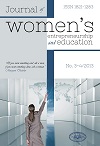Educational Gender Party: Challenges of the Kenyan Girl
Main Article Content
Abstract
This paper based on a critical analysis of official reports and related literature, focuses on girls’ education in Kenya within the context of a larger development paradigm that centres on the importance of their education for both economic and social development. It asserts that a country that does not invest enough in educating and empowering girls is undermining its socio-economic resilience, productivity and competitive potential. Investing in girls’ education is investing in development. Girls’ education has significant multiplier effects; in particular, as resources shrink, investing in girls should be recognized as a high-return investment. Despite the strides that Kenya has made in expanding the educational opportunities since independence in 1963, the access of girls to educational opportunities continues to be limited due to various socio-economic and political barriers. The paper contends that, until all vestiges of these inequities are eliminated, gender equality in education and in the larger development paradigm remains but a pipe dream. Measures to level the educational playing field remain critical for girls, families, communities and the nation as a whole, which cannot afford to be dispossessed off the full potential of over half of its population women.
Article Details
Section
Once the manuscript is accepted for publication, authors shall transfer the copyright to the publisher. If the submitted manuscript is not accepted for printing by the journal, the authors shall retain all their rights. The following rights on the manuscript are transferred to the publisher, including any supplementary materials and any parts, extracts or elements of the manuscript:
- the right to reproduce and distribute the manuscript in printed form, including print-on-demand;
- the right to print prepublications, reprints and special editions of the manuscript;
- the right to translate the manuscript into other languages;
- the right to reproduce the manuscript using photomechanical or similar means including, but not limited to photocopy, and the right to distribute these copies;
- the right to reproduce and distribute the manuscript electronically or optically using and all data carriers or storage media, and especially in machine readable/digitalized form on data carriers such as hard drive, CD-ROM, DVD, Blu-ray Disc (BD), Mini Disc, data tapes, and the right to reproduce and distribute the article via these data carriers;
- the right to store the manuscript in databases, including online databases, as well as the right to transmit the manuscript in all technical systems and modes;
- the right to make the manuscript available to the public or to closed user groups on individual demand, for use on monitors or other readers (including e-books), and in printable form for the user, either via the Internet, online service, or via internal or external networks.
Authors reserve the copyright to published articles and have the right to use the article in the same manner like third parties in accordance with the licence Attribution-Non-Commercial-Non-Derivate 4.0 International (CC BY NC ND). Thereby they must quote the basic bibliographic data of the source article published in the journal (authors, article title, journal title, volume, pagination).
